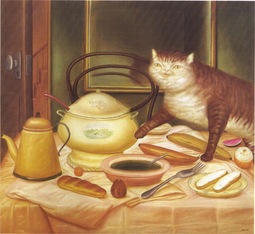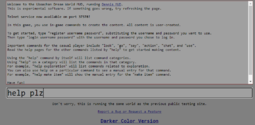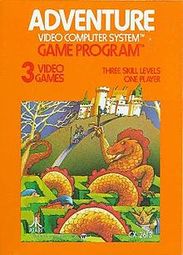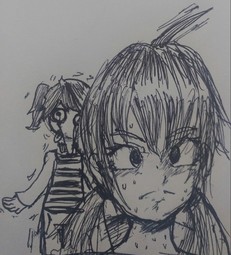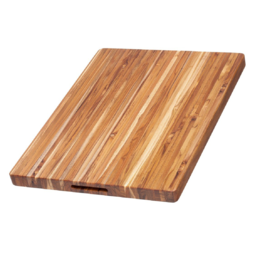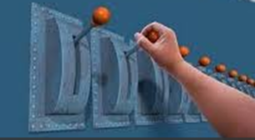
R: 8 / I: 0
Currently, I am planning some features for items and exits to finally do some more stuff.
> imbue item <id> <action> <text>
This command, similar to decorate item, will let you set custom text to broadcast when an item is used. The difference is that you will be able to set the broadcast response to a custom command to be used on an item. Any number of imbuements can be added. If the action is "use", then the effect is identical to just using "decorate item".
> Ex. 1: imbue item 4 pull pulled the lever, but nothing happened.
In this example, assuming that item 4 is named "big lever", when a player enters the command "pull big lever", the text "Playername pulled the lever, but nothing happened." will broadcast.
> Ex. 2: imbue item 5 """look into""" looked into the crystal ball.
In this example, a multi-word custom action is set by surrounding it with triple-double quotes. If the item is named "crystal ball", then the custom text will be broadcast when the player runs the command "look into crystal ball".
> This also works with the %player% marker.
> Possible custom commands that can be used on an item will be listed when the item is looked at.
> unimbue item <id> <action>
Removes an imbuement from an item.
> imbue exit <id> <action>
This command sets an alternative command that can be called by a player to take an exit. It makes taking an exit seem more natural.
> Ex. 1: imbue exit 3 climb
In this example, if exit 3 is named "ladder", then in addition to being able to use the exit with the command "go ladder", the player could also do "climb ladder" and they would use the exit. Any number of imbuements can be added. Since <action> is the last argument, you do not have to use triple-double quotes to define a multi-word action.
> unimbue exit <id> <action>
Removes an imbuement from an exit.
> pair telekey <item> <room>
This command sets the item <item> to teleport the user to <room> when used.
> Ex. 1: pair telekey 4 12
In this example, item 4 will teleport a player to room 12 when they use it.
> unpair telekey <item>
This undoes the "pair telekey" command.
> rig item <id> <action> <effect> <arguments>
This command allows fine-tuned control over stuff that will happen when specific custom commands are used on an item. It is useful to use "imbue item" in conjunction with this command. The first effect that will be added is "teleport". Similar to "imbue item", multi-word actions can be defined with triple-double quotes.
> Ex. 1: rig item 4 pull teleport 12
This is similar to using "pair telekey", except while "pair telekey" will cause the item to teleport a user when the use command or any custom command is used on that item, with this example, the item will only teleport the user when they "pull" it. If there is custom broadcast text set for the "pull" action on item 4 with the "imbue item" command, that text will be broadcast. Otherwise the default decoration will be broadcast. One item will be able to have multiple different effects depending on how it's used.
> Other planned rig effects:
> "lock exit" / "unlock exit": Lock or unlock an exit in the current room.
> "hide item" / "unhide item": Makes an item disappear or reappear in the current room.
> "hide exit" / "unhide exit": Makes an exit disappear or reappear in the current room.
> "toggle item" / "toggle exit": Like "(un)hide item" or "(un)hide exit", except the state switches back and forth every time it is used.
> "toggle lock": Like "(un)lock exit", except the state switches back and forth every time it is used.
> for (un)lock exit, (un)hide item, (un)hide exit, and toggle item/exit/lock, if one argument is given, it is the item or exit id in the current room; if two arguments are given, they are the room id first, and then the item or exit id.
> (un)hide item <id>
Hide the item <id> so that no one can see it is there, look at it, or pick it up until it is unhidden. This ties into the "hide item" effect for the rig command.
> (un)hide exit <id>
Hide the exit <id> so that no one can see it is there, look at it, or use it until it is unhidden. This ties into the "hide exit" effect for the rig command.
Development Updates
This thread is for planned features, and updates when new features or bugfixes are introduced, or things are changed.Currently, I am planning some features for items and exits to finally do some more stuff.
> imbue item <id> <action> <text>
This command, similar to decorate item, will let you set custom text to broadcast when an item is used. The difference is that you will be able to set the broadcast response to a custom command to be used on an item. Any number of imbuements can be added. If the action is "use", then the effect is identical to just using "decorate item".
> Ex. 1: imbue item 4 pull pulled the lever, but nothing happened.
In this example, assuming that item 4 is named "big lever", when a player enters the command "pull big lever", the text "Playername pulled the lever, but nothing happened." will broadcast.
> Ex. 2: imbue item 5 """look into""" looked into the crystal ball.
In this example, a multi-word custom action is set by surrounding it with triple-double quotes. If the item is named "crystal ball", then the custom text will be broadcast when the player runs the command "look into crystal ball".
> This also works with the %player% marker.
> Possible custom commands that can be used on an item will be listed when the item is looked at.
> unimbue item <id> <action>
Removes an imbuement from an item.
> imbue exit <id> <action>
This command sets an alternative command that can be called by a player to take an exit. It makes taking an exit seem more natural.
> Ex. 1: imbue exit 3 climb
In this example, if exit 3 is named "ladder", then in addition to being able to use the exit with the command "go ladder", the player could also do "climb ladder" and they would use the exit. Any number of imbuements can be added. Since <action> is the last argument, you do not have to use triple-double quotes to define a multi-word action.
> unimbue exit <id> <action>
Removes an imbuement from an exit.
> pair telekey <item> <room>
This command sets the item <item> to teleport the user to <room> when used.
> Ex. 1: pair telekey 4 12
In this example, item 4 will teleport a player to room 12 when they use it.
> unpair telekey <item>
This undoes the "pair telekey" command.
> rig item <id> <action> <effect> <arguments>
This command allows fine-tuned control over stuff that will happen when specific custom commands are used on an item. It is useful to use "imbue item" in conjunction with this command. The first effect that will be added is "teleport". Similar to "imbue item", multi-word actions can be defined with triple-double quotes.
> Ex. 1: rig item 4 pull teleport 12
This is similar to using "pair telekey", except while "pair telekey" will cause the item to teleport a user when the use command or any custom command is used on that item, with this example, the item will only teleport the user when they "pull" it. If there is custom broadcast text set for the "pull" action on item 4 with the "imbue item" command, that text will be broadcast. Otherwise the default decoration will be broadcast. One item will be able to have multiple different effects depending on how it's used.
> Other planned rig effects:
> "lock exit" / "unlock exit": Lock or unlock an exit in the current room.
> "hide item" / "unhide item": Makes an item disappear or reappear in the current room.
> "hide exit" / "unhide exit": Makes an exit disappear or reappear in the current room.
> "toggle item" / "toggle exit": Like "(un)hide item" or "(un)hide exit", except the state switches back and forth every time it is used.
> "toggle lock": Like "(un)lock exit", except the state switches back and forth every time it is used.
> for (un)lock exit, (un)hide item, (un)hide exit, and toggle item/exit/lock, if one argument is given, it is the item or exit id in the current room; if two arguments are given, they are the room id first, and then the item or exit id.
> (un)hide item <id>
Hide the item <id> so that no one can see it is there, look at it, or pick it up until it is unhidden. This ties into the "hide item" effect for the rig command.
> (un)hide exit <id>
Hide the exit <id> so that no one can see it is there, look at it, or use it until it is unhidden. This ties into the "hide exit" effect for the rig command.

R: 9 / I: 0
I found another bug with breaking duplified items.
https://pastebin.com/hhfQMew5
Bug reports
Bug reports threadI found another bug with breaking duplified items.
https://pastebin.com/hhfQMew5

R: 0 / I: 0 (sticky)
This board is for general discussion and troubleshooting of the Dennis MUD software project, and its public test instance, our own Uboachan Dream World MUD server.
Post in this board if you have questions, comments, or suggestions, if you need help with something, or have a bug to report, or if you want to show off your realm.
The original discussion thread is archived here.
Dennis on GitHub
Dream World MUD
Enter the Dream WorldThis board is for general discussion and troubleshooting of the Dennis MUD software project, and its public test instance, our own Uboachan Dream World MUD server.
Post in this board if you have questions, comments, or suggestions, if you need help with something, or have a bug to report, or if you want to show off your realm.
The original discussion thread is archived here.
Dennis on GitHub

